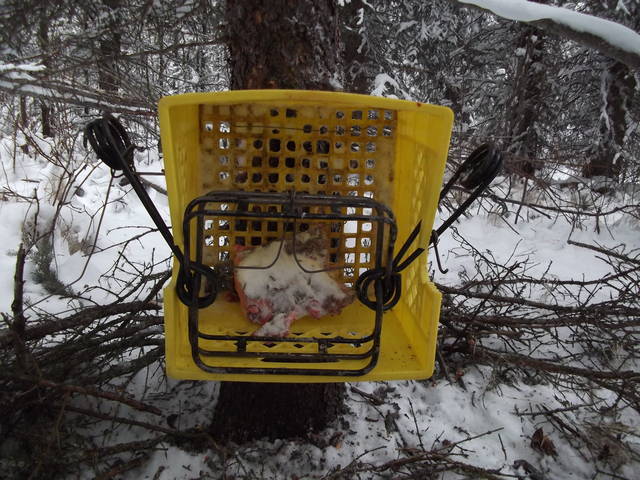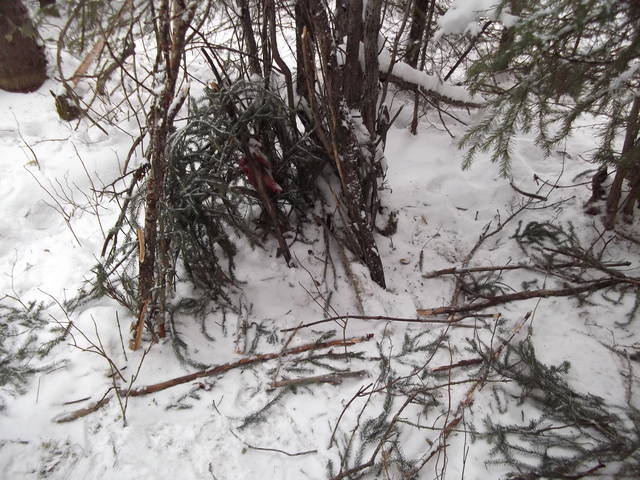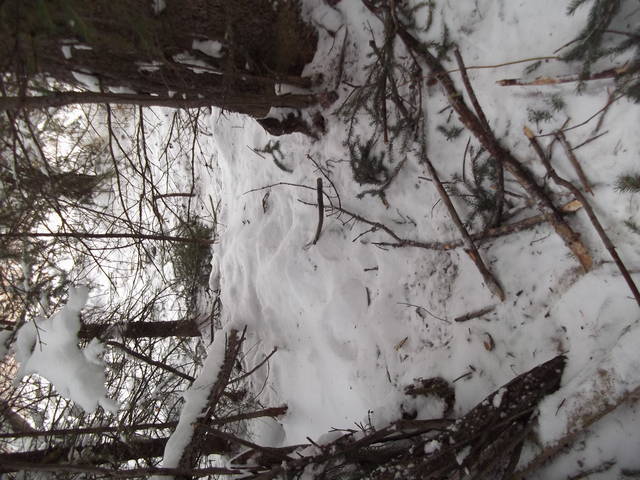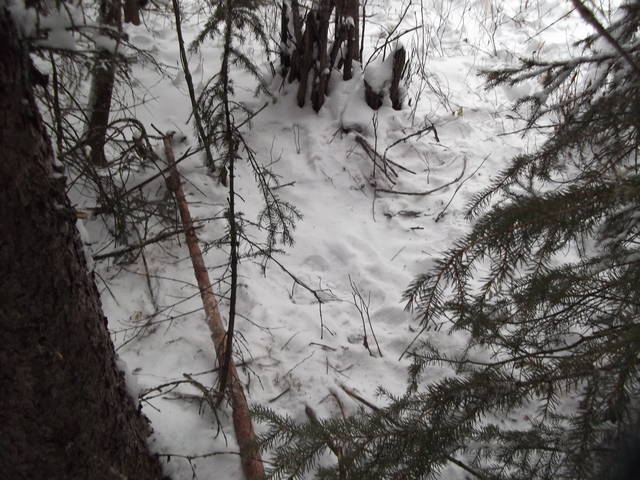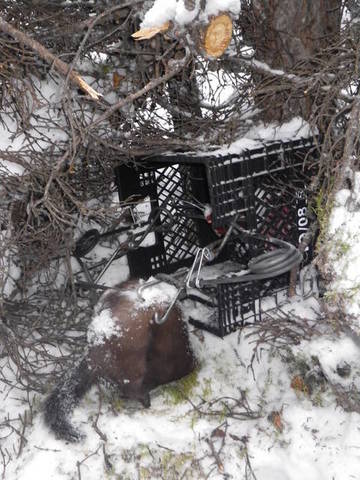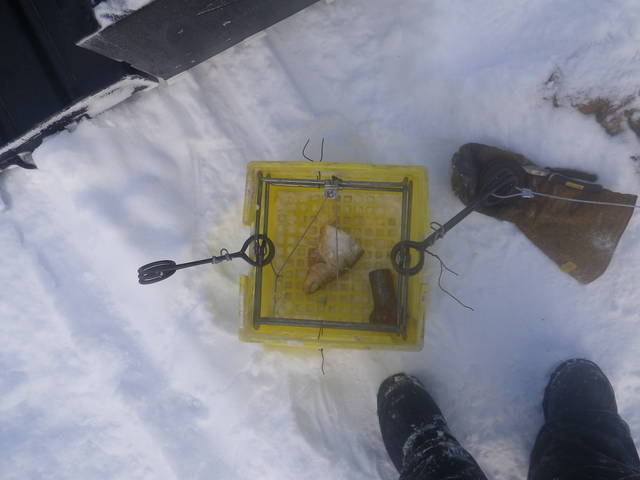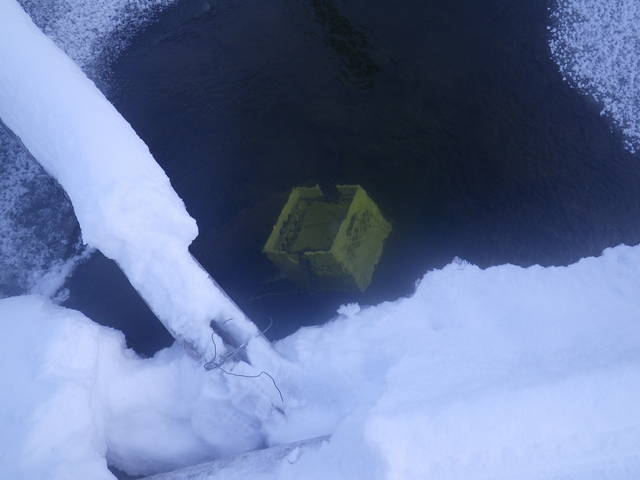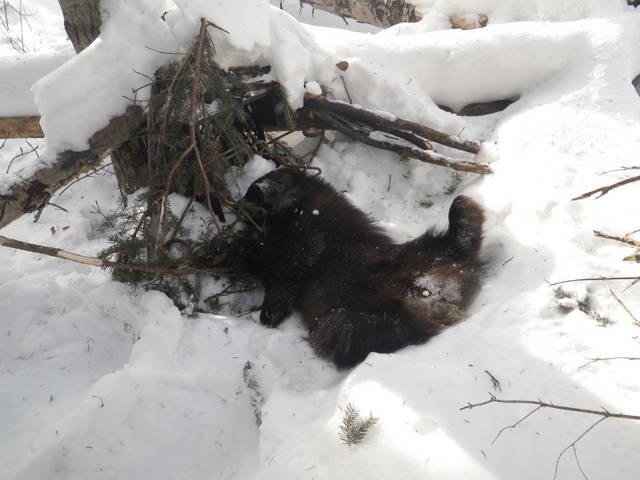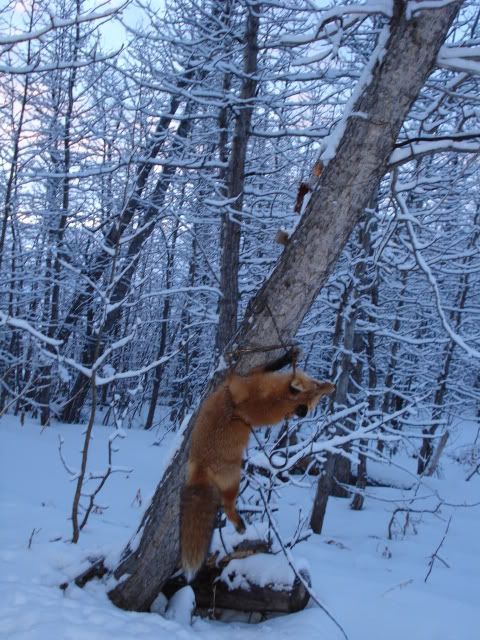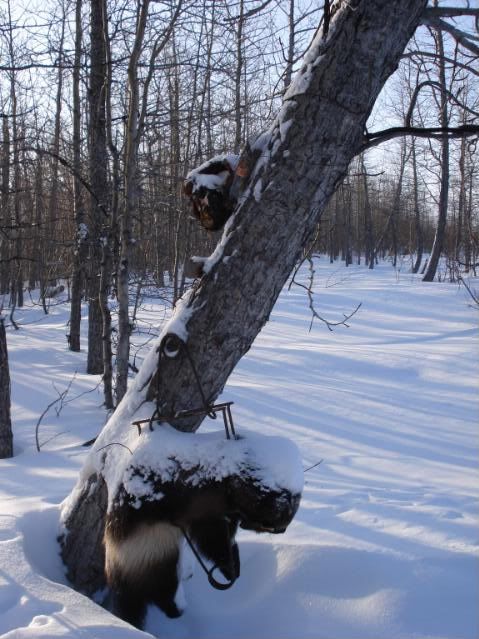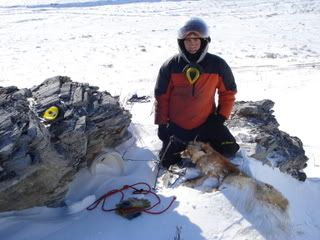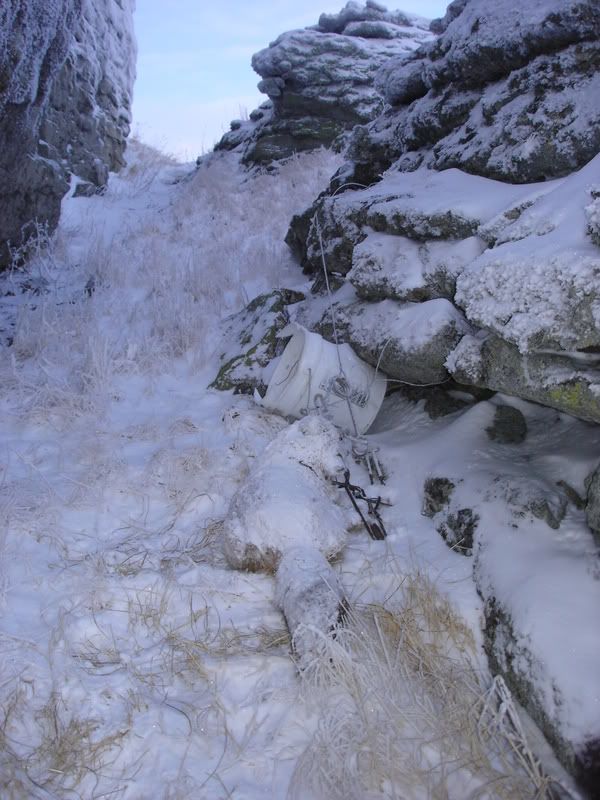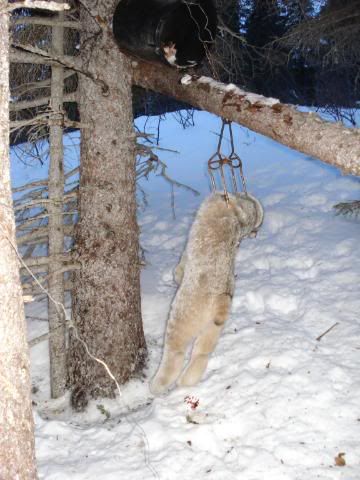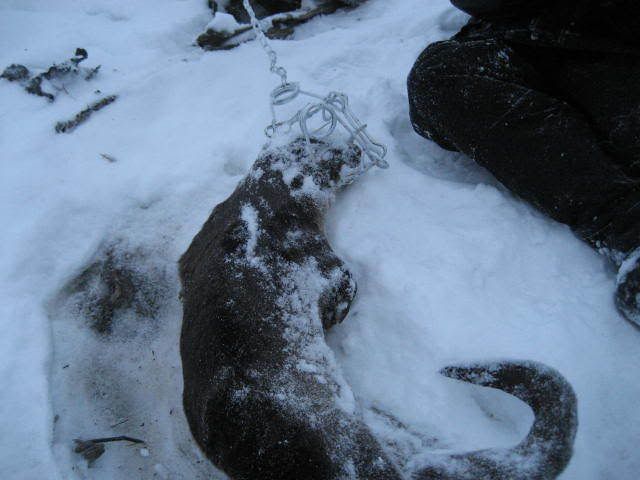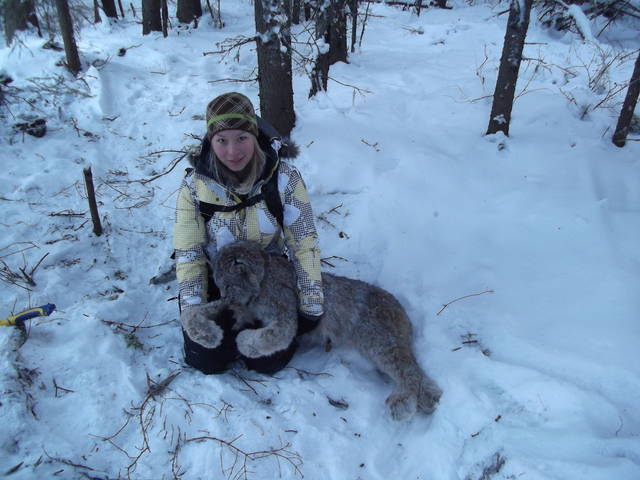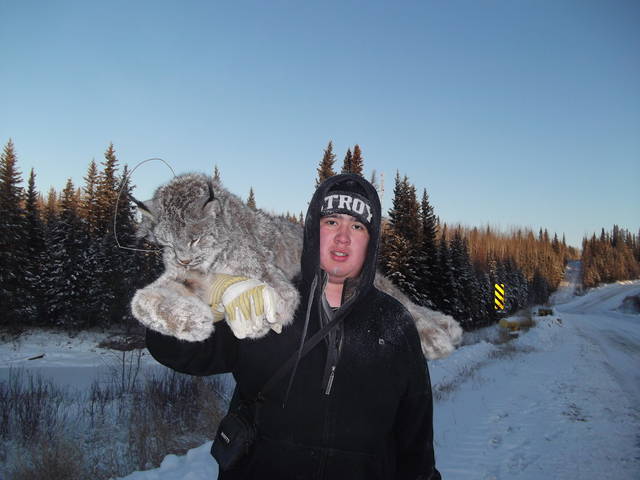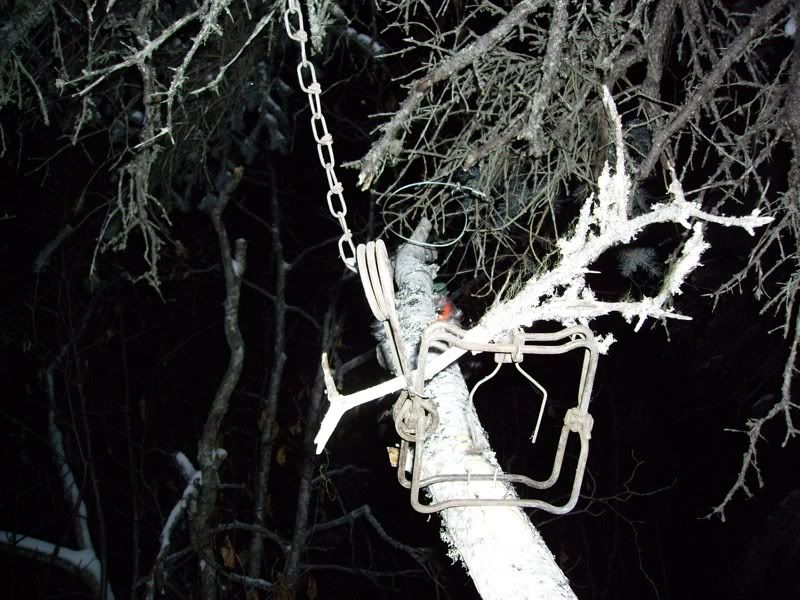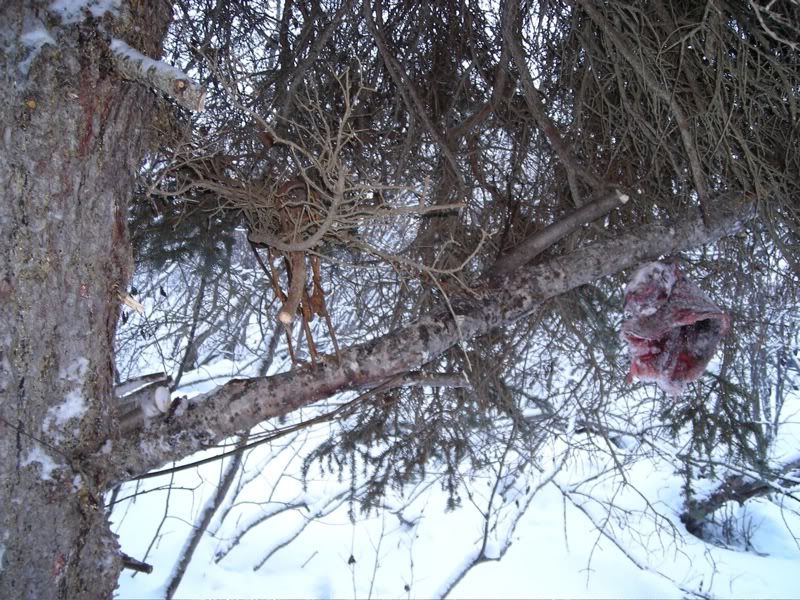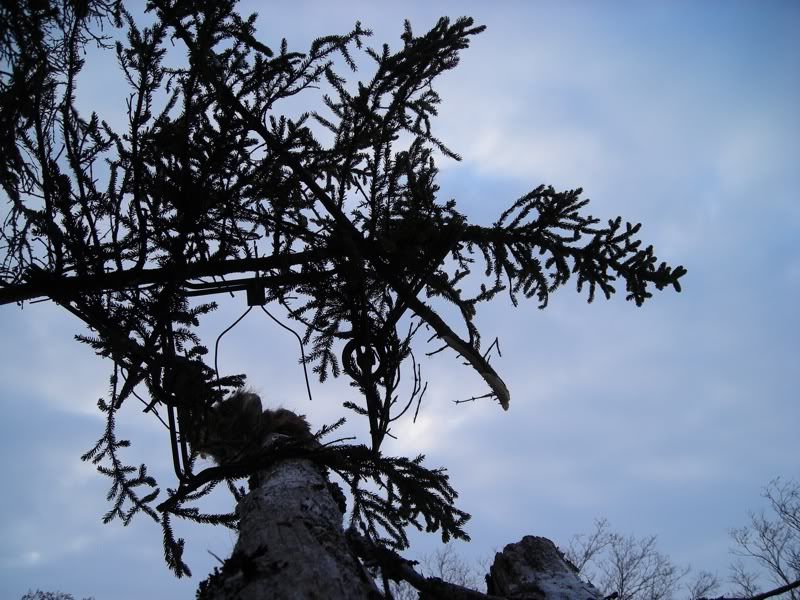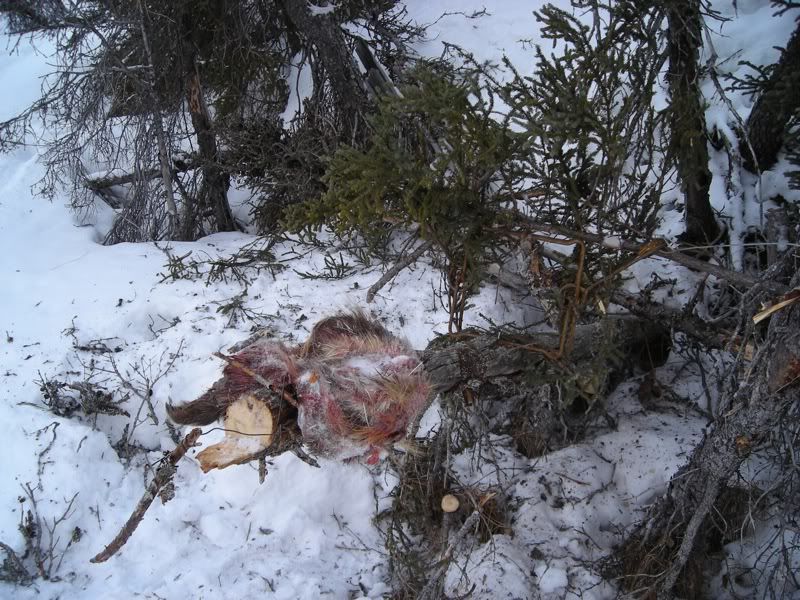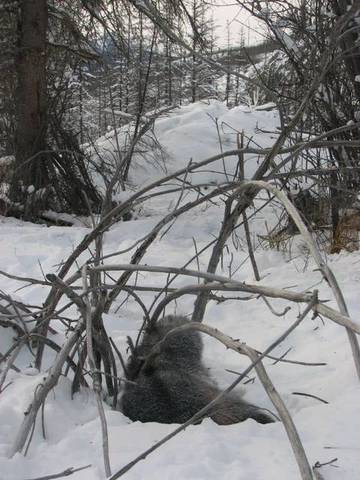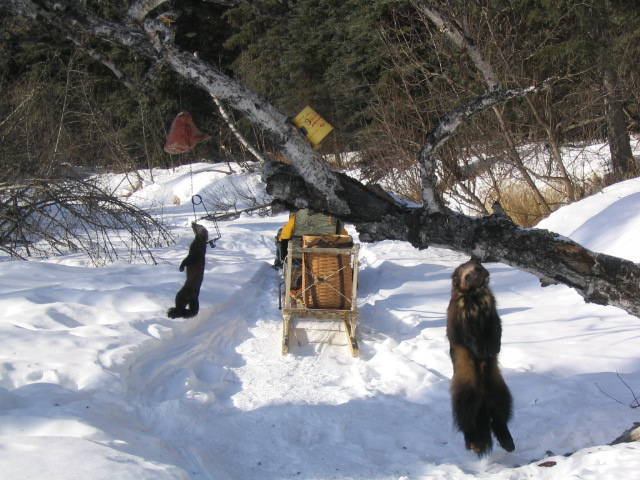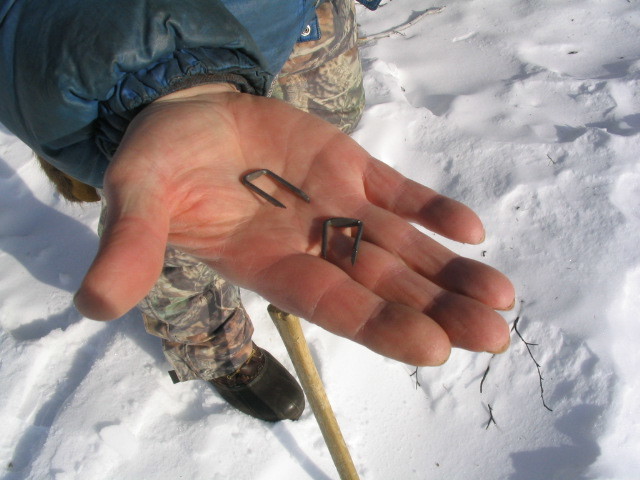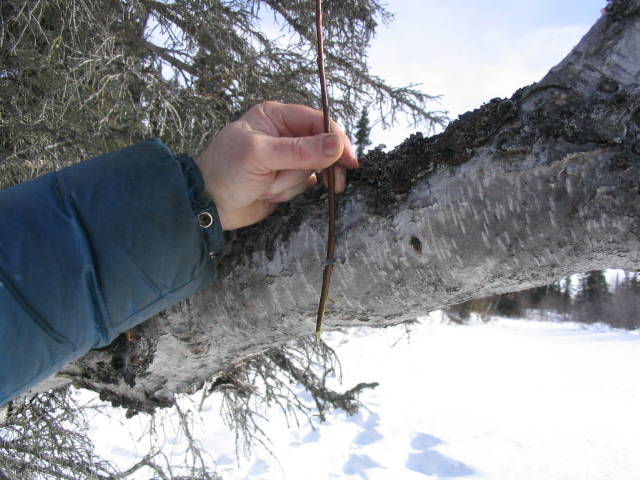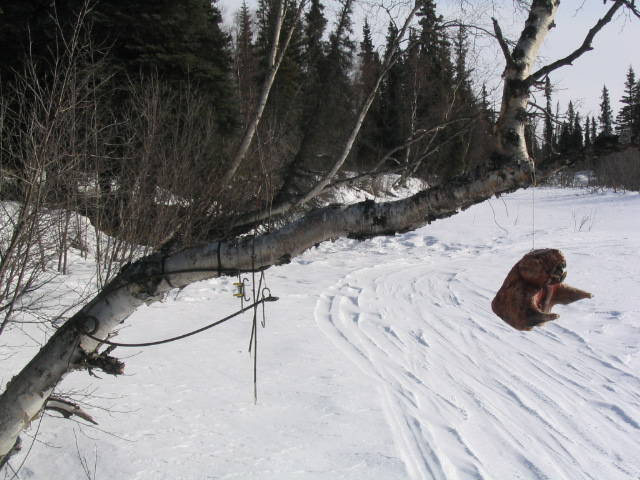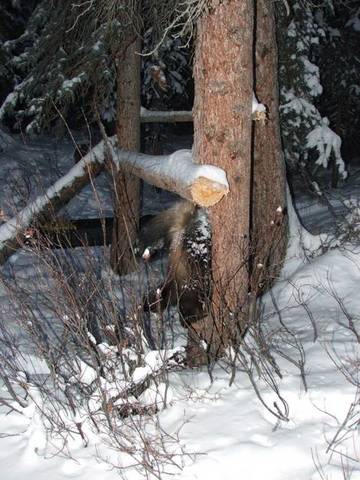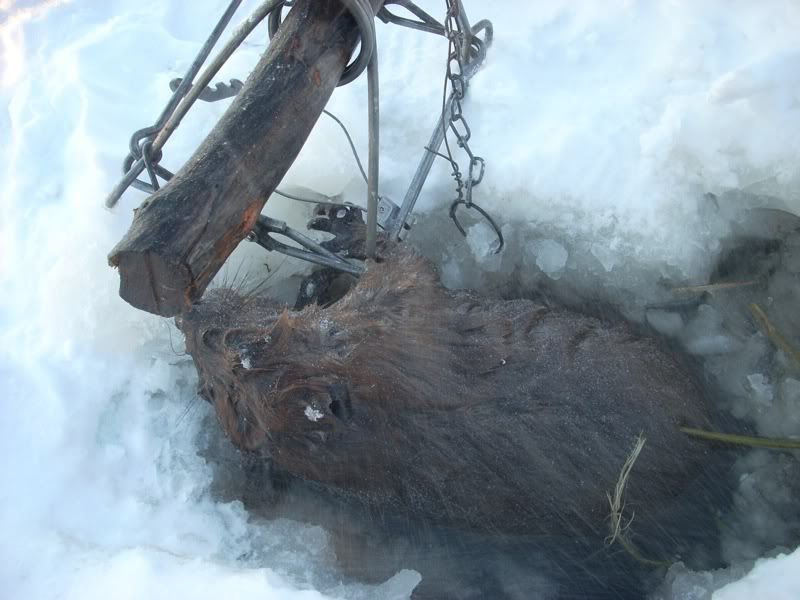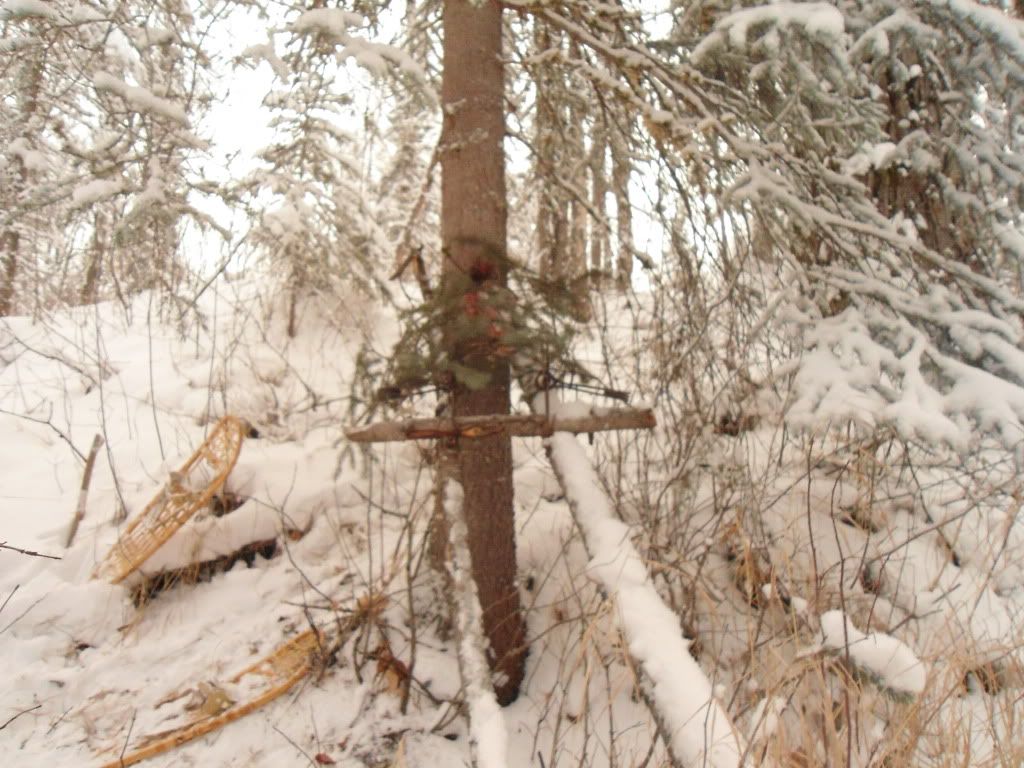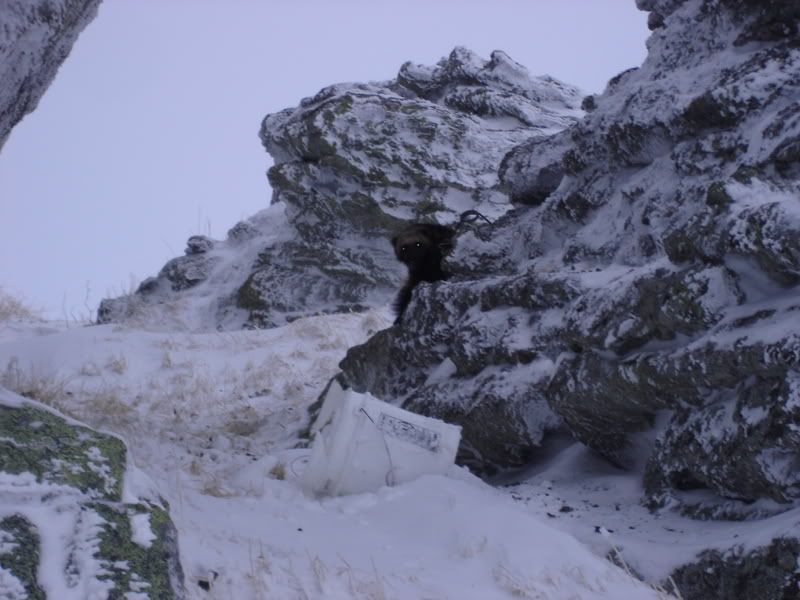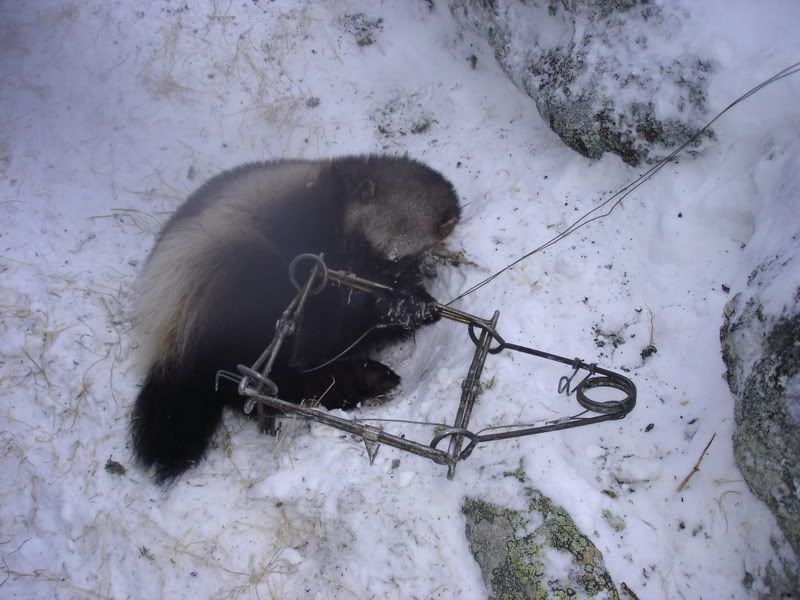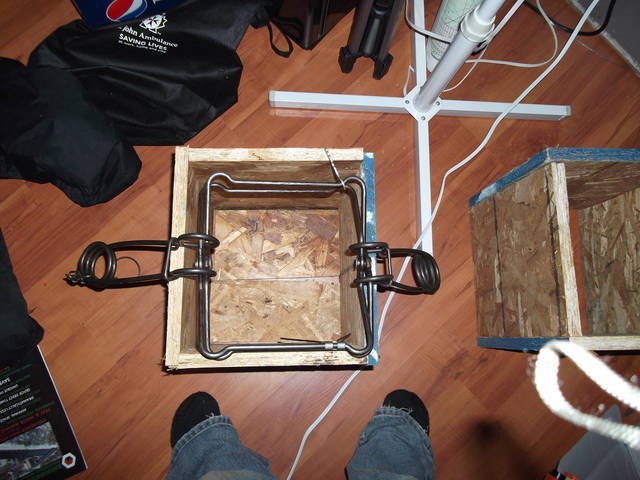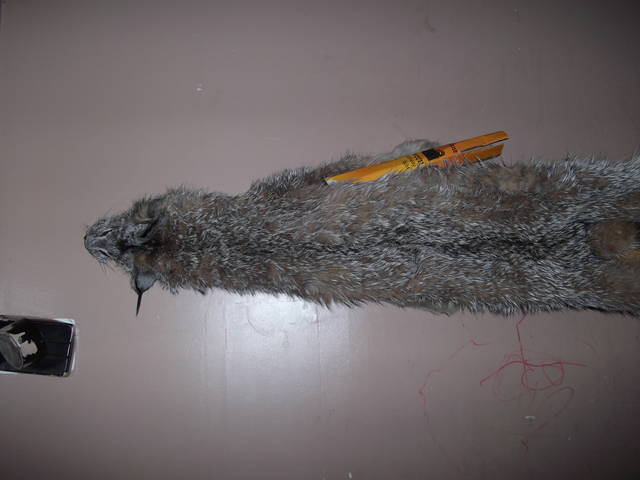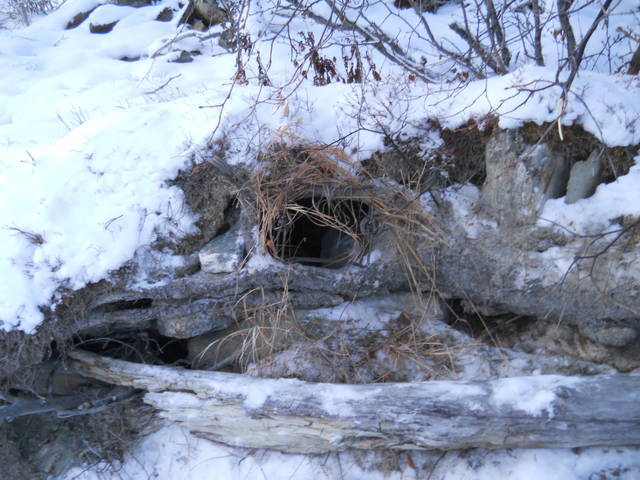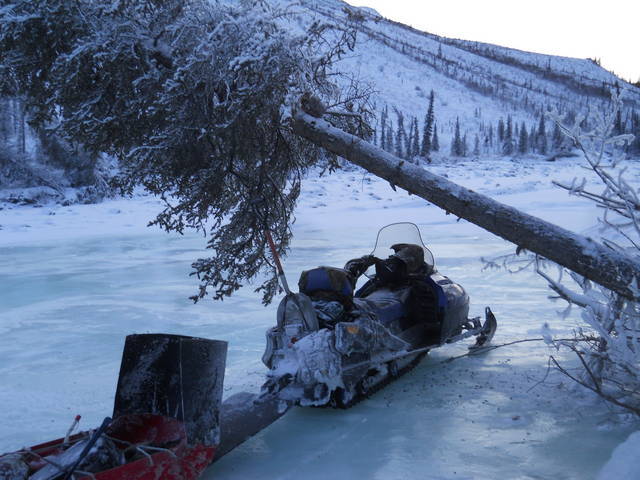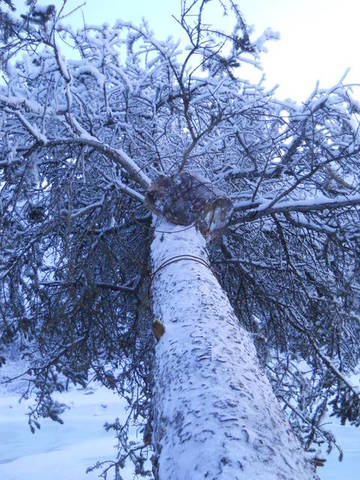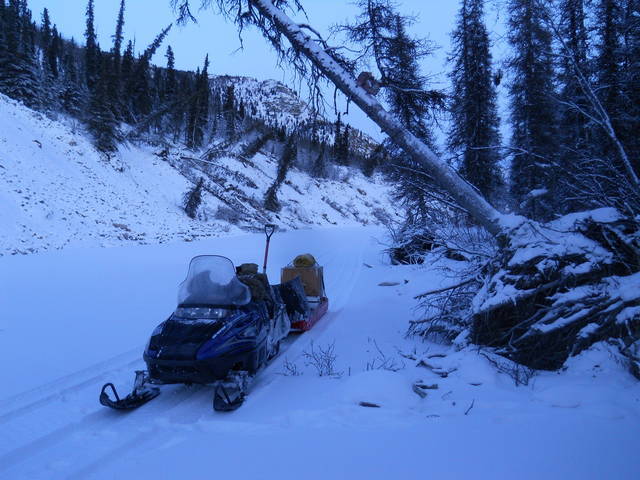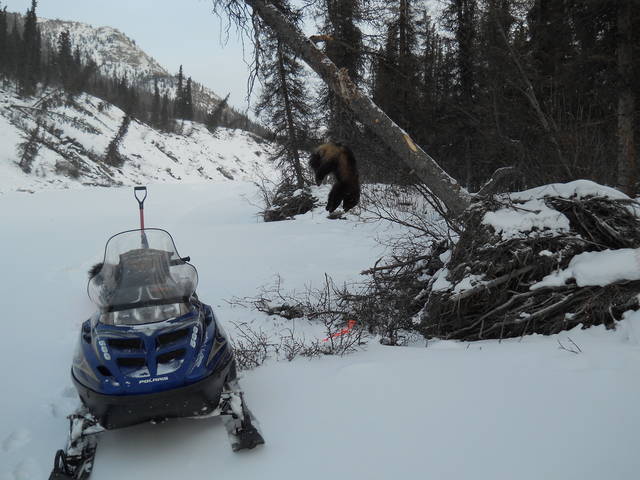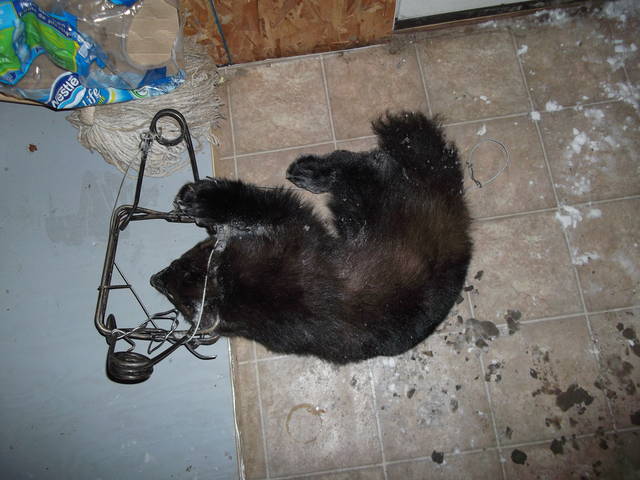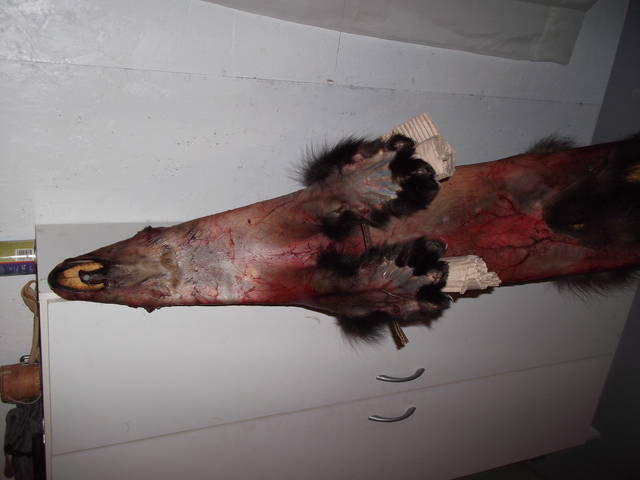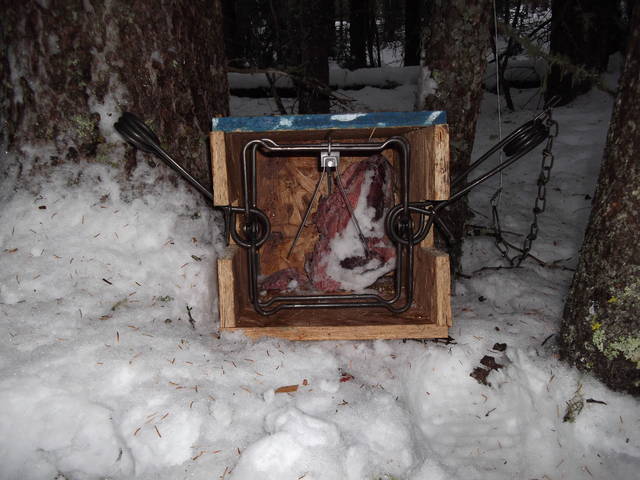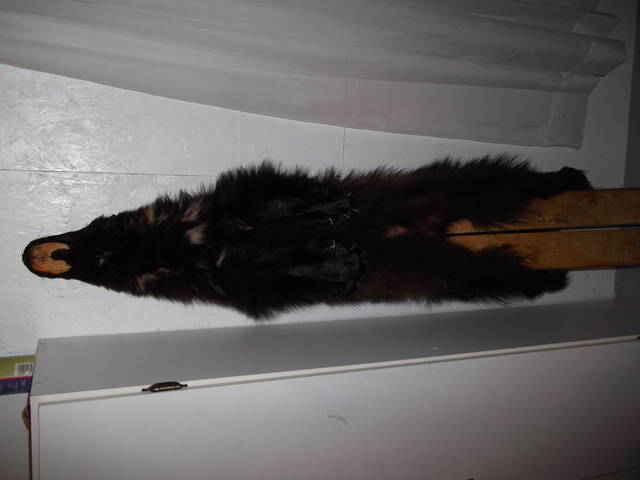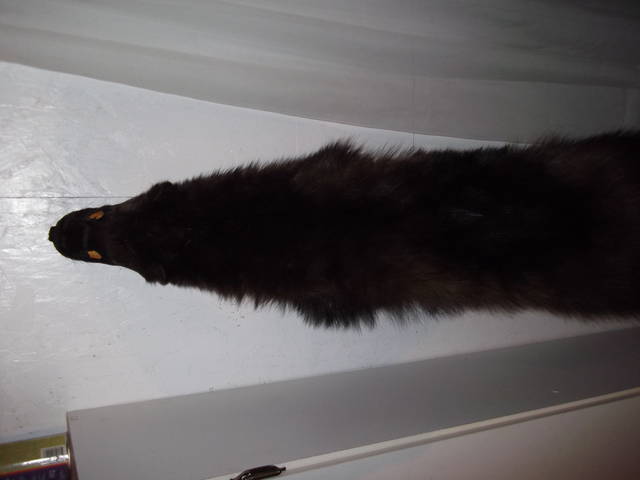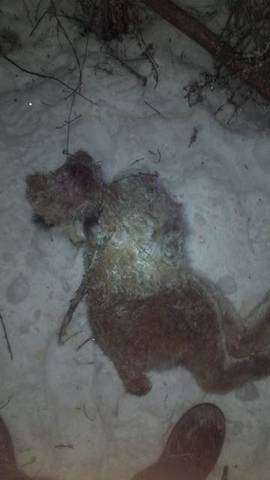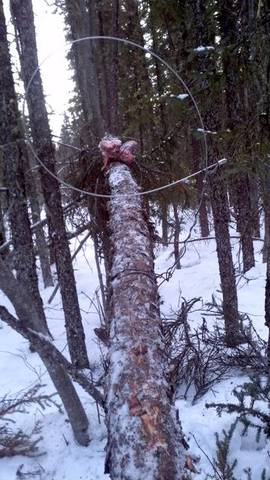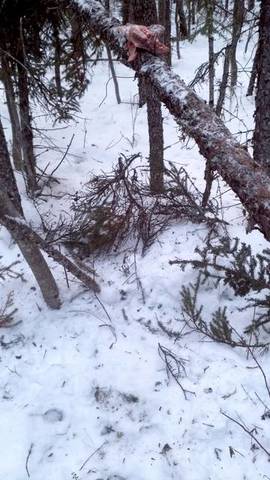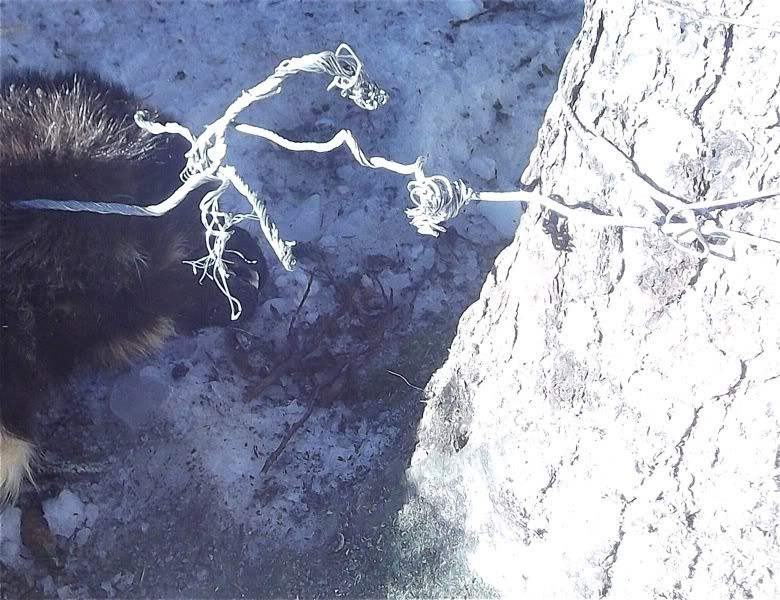Gentlemen here is some of the research I've been digging through. I see my high-lighted sectiosn didn't show up here so i guess its every man for himself.
Wolverine questions arising from Initial meeting
Reproductive rates, causes of mortality, survival rates, dispersal, connectivity, distribution and status.
Build a habitat model across the Rocky Mountain States
Providing linkages in-between islands of suitable habitat became critical to the conservation initiative.
Goal of increasing the survival of adult females in the smaller island ranges
Landscape scale management approach is required; not individual isolated projects.
Dispersal is important. Need to identify obstacles to dispersal and areas of high risk to dispersal success.
Climate change – How do we deal with planning for changing habitat?
Need to standardize data collection
Impacts of human avoidance
Denning and energy expenditure
Diet, food source, food caching,
Identify key areas for connectivity and protect them.
Implement a broad wolverine survey and monitoring program to determine distribution and population trend
To accurately define wolverine status in Alberta, additional research on demography, distribution and ecology is needed.
There was not enough data to determine a robust population estimate for the foothills study area
Results indicate that the best predictors of wolverine occurrence were negative associations with regenerating areas from fire or harvest and seismic line density. Topographic ruggedness was positively associated with wolverine occurrence.
Determine population size in the Kananaskis area (approximately 4,000 km2).
The ACA, led by Michael Jokinen, has been conducting a pilot study testing methods to collect hair samples (DNA) and camera trap images of chest patterns for identifying individuals and gender.
Probability of detection is lower in foothills than it was in the wilderness park. In addition to being at different densities, wolverines appear to be harder to detect where they exist at lower densities.
Probability of detection is lower in foothills than it was in the wilderness park. In addition to being at different densities, wolverines appear to be harder to detect where they exist at lower densities.
Future work to expand density estimates to the south and north of Willmore.
To prioritize the Rocky Mountain Corridor.
To study the fine-scale genetic structure across the TransCanada Highway for wolverines and determine if the highway is subdividing this population genetically
Test other hair snagging methods (apply loose coil on barbed wire, experiment with gun brushes, etc.) to increase efficiency in collecting hair samples. This survey will also be repeated in winter 2012/2013, focusing on under-sampled areas identified by 2011 hair sample results.
Continued monitoring is required for the effectiveness of highway crossing structures and mitigating processes for increasing permeability across the highway
There are geographic gaps and under-sampled areas that need to be addressed.
Future work should address identifying individuals crossing the Trans-Canada Highway, the number of repeat visits to sites and detecting breeding areas
There are two separate perceived eco-regions for wolverine populations in Alberta – the Northern Boreal and the Eastern Slopes of the Rocky Mountains.
The majority of wolverines harvested in Alberta are taken in the northern boreal ecoregion. ASRD has been getting pressure from the trapping community in the High Level area to increase the quota because they are seeing so many wolverine tracks on their trap lines. At the same time, ASRD is getting pressure to reduce trapping quotas in the south.
Data captured from trapping registrations (sex, date and location) may be useful for future management.
Though it would be interesting to overlay trapper effort on the distribution of harvest, ASRD does not have data on trapper effort (i.e. Only trap line density).
It’s hard to capture wolverines and keep collars on.
We need to determine the best way to monitor and assess wolverines
It will take a prolonged effort if you want to get any useful information from wolverine collar studies; a meta-analysis approach from several areas may provide the best opportunities
Key information needs:
- Distribution / range / occupancy / population estimates / sources and sinks.
- Denning habitat.
- Dispersal / linkages / connectivity / effect of transportation corridors.
- Interspecies relationships (i.e. other carnivores).
- Diet.
- Disease.
- Genetics / gene flow.
- Harvest sustainability / high risk areas.
- Human disturbance (i.e. recreational disturbance / industrial disturbance).
- Changing climate / changing climate mapping for conservation planning.
- Bring all stakeholders to the same table / cross-boundary approach / international collaboration.
- Social interactions.
- Reintroduction methods.
- Reproduction.
- Survival rates.
- Age structure.
Priority 1
A) Distribution – Occupancy (including mapping of primary and maternal habitat suitability)
B) Population Density (in some areas)
C) Dispersal / Linkages / Connectivity / Effect of Transportation Corridors
D) Harvest Sustainability / High Risk Areas
E) Human Disturbance
Priority 2
F) Genetics / Gene Flow
G) Survival Rates
Priority 3
Denning - Boreal
Inter Spp. Relationships – Carnivores
Disease
Reproduction
Age Structure & Adult Female Survival
Priority 4
Denning - Mountain
Diet
Social Interactions
Reintroduction Methods
Paper One :
Wolverine Ecology and Habitat Use
in the North Columbia Mountains: Progress Report
ABSTRACT
We are currently completing a multiyear project investigating demography and habitat use of a harvested population of wolverine (Gulo gulo) in a 7,000-km2 area within the Kootenay region of British Columbia. The study area contains 10 registered traplines, 2 national parks, a major transportation corridor, 2 hydroelectric reservoirs,
and active logging areas, and supports a substantial helicopter skiing industry. Wolverine are considered vulnerable by the British Columbia Wildlife Branch; consequently, vital rate data are important for evaluating management/conservation options. A total of 39 (14F, 25M) adult and subadult wolverine have been captured over 3,700 trap-nights using log-box traps baited with available road-killed wildlife. Population estimates for the core
4,000-km2 study area based on 4 years of live-trapping data are 25.6 (95% CI: 15.6–55.3) and 24.0 (95% CI: 14.7–44.3) for 1996 and 1997 respectively. Six of 11 mortalities detected during the study to date have been human caused. Annual survival rate was estimated to be 0.77 (95% CI: 0.66–0.88) for all age and sex categories combined.
Reproductive data are being gathered through radiotelemetry and follow-up ground investigations of breeding females after den abandonment. Three 2-kit litters have been produced in 14 adult female reproductive seasons. Four of these juveniles have been captured and implanted with radio transmitters. Natal den sites have been in the
Engelmann Spruce–Subalpine Fir (ESSF) biogeoclimatic zone, and associated with woody debris and/or large boulder talus in undeveloped drainages. Home ranges of males (−= 1,005 km2) were significantly larger than those of females (−= 310 km2). At the study area scale, the distribution of wolverine use is highly clumped in 4 distinct utilization peaks. The 2 largest utilization peaks occur within Glacier and Mount Revelstoke national parks, disproportionate to their land base within the study area. The focus for the remainder of the project is on the monitoring of existing females and kits, and identification and characterization of natal dens in spring 1999. A population census using motion-sensitive cameras will be conducted March–April 1999. Final report and
management recommendations will be completed in 2000–01.
John A. Krebs
development has resulted in declining wolverine populations
and, subsequently, listing of the species as Endangered by COSEWIC (van Zyll de Jong 1975, Dauphine 1989). Western populations of wolverine may be heading in a similar direction if measures are not taken now to protect wolverine and wolverine habitat. The juxtaposition of national parks and transportation corridors, as well as resource extraction activities and commercial trapping, within our study area provides an opportunity to examine how these land uses influence wolverine vital rates.
Specific objectives are:
1. Estimate vital (birth, death) rates for wolverine within the
North Columbia Mountains (NCM) of southeastern British
Columbia
2. Identify landscape/habitat characteristics and human use
activities that correlate with use by wolverine.
3. Develop a population model to estimate current and potential
rates of increase of wolverine.
4. Produce biologically-based management recommendations
for the conservation of wolverine in the NCM.
STUDY AREA
The project area (7,000 km2) is located north of the Trans-
Canada Highway between Revelstoke and Rogers Pass in the
south and the Mica Dam in the north, and within Fish and
Wildlife management units 4-37, 4-38, and 4-33 (Fig. 1). The
core live-trapping area (4,000 km2) consisted of the western
portion of the area, along the eastern side of the Revelstoke
reservoir. The area is within the Northern Columbia
Mountains ecoregion; biogeoclimatic zones include Interior
Cedar–Hemlock (ICH; vk1, wk1), Engelmann Spruce–
Subalpine Fir (ESSFvc) and Alpine Tundra (AT).
The study area encompasses 10 registered traplines, portions
of 2 national parks (Mount Revelstoke [MRNP], and
Glacier [GNP]), 2 tree farm licenses, and several Forest
License and Small Business Forest Enterprise Program cutting
areas. Trappers harvest approximately 3 wolverine per
year. The main valley bottom was inundated in 1985 with the
construction of the Revelstoke Dam. The Kinbasket reservoir
to the east and north was formed in 1973 with the construction
of the Mica Dam. Other land uses include mining in
Goldstream/French Creek, and heli-skiing, snowmobiling,
and ski-touring at numerous locations throughout the area.
Figure 1. Location of the study area near Revelstoke, B.C.
Proc. Biology and Management of Species and Habitats at Risk, Kamloops, B.C., 15–19 Feb. 1999. 697
Wolverine in the Columbia Mountains
METHODS
LIVE TRAPPING AND ANIMAL HANDLING
In consultation with local trappers, 33 log-cabin style and 7
portable (4 X 4 ft lumber) traps were constructed throughout
the study area during 1994–97 to live-capture wolverine.
Trap design was modified from Copeland et al. (1995) by
using quick-release snaps as the trigger device and a bevelled
front log on the door to improve fit when closed. Twenty-four
traps were located in valley bottom ICHvk1 sites, 13 were
within the ICHwk1, and 3 were placed in the ESSFvc. Four of
the 40 traps were constructed within Mount Revelstoke and
Glacier national parks. During the first winter we also used
metal barrel traps (Banci 1987) opportunistically. Trapping
effort was not even across the entire study area (Fig. 2), due
to limitations of topography, access, and funding. Despite
these limitations, our trapping effort resulted in 4 welldistributed
“peaks” from north to south within the study area
and was unbiased with respect to protected areas (Fig. 2).
Wolverine were immobilized with Telazol at 10mg/kg with
a jabstick, ear-tagged with numbered rototags (NASCO,
Modesto, CA), weighed, sexed, examined for reproductive
status, and radio-collared (Lotek Engineering, Inc.,
Newmarket, ON; Telonics, Mesa, AZ, MOD-335). In order to
minimize the chance of affecting guard hairs and underfur, a
canvas insert designed to rot through after approximately 2
years was used to close the collar. The upper-left first premolar
was extracted from most animals for aging purposes
(Rausch and Pearson 1972). Cementum analysis was performed
by Mattson’s Lab in Montana.
Wolverine kits were captured at approximately 12–13
weeks of age by tracking reproductive females after emergence
from natal dens. Kits were pursued on foot and immobilized
after being spotted from a helicopter. Kits were
surgically implanted with Telonics IMP300/L radio-transmitters
under isoflourine anesthetic by an on-site veterinarian
using a ventral midline procedure.
MORTALITY AND REPRODUCTION
Mortalities were detected via 4-hour-delay mortality sensors
built into the radio-collar. We placed a high priority on recovering
collars on mortality mode. Only cases where the
radio-collar and the carcass were recovered were considered
mortalities. Where only the collar was recovered it was
Figure 2. Adaptive kernal utilization distribution depicting live-trapping effort across the study area, 1995–98. Points correspond to
trap locations.
KREBS AND LEWIS
698 Proc. Biology and Management of Species and Habitats at Risk, Kamloops, B.C., 15–19 Feb. 1999.
coded as unknown. Where carcasses were recovered, a
necropsy was performed by a veterinarian to determine
cause of death. Survival rates were calculated following the
approach outlined by Trent and Rongstad (1974) and Heisey
and Fuller (1985), using program BOOTER (Hovey 1995),
which bootstraps estimates to derive confidence intervals.
To confirm reproduction, radiotelemetry flights were intensified
in March–late April to locate denning females.
Females with identified dens were flown frequently (2 times
per week or more) during May and June to increase the likelihood
of obtaining visual observations of females with kits.
We did not disturb den sites on the ground during the first
8–9 weeks of use to avoid potential displacement or abandonment
of the site by the female.
DISTRIBUTION AND HABITAT USE
Wolverine were located from the air using a Cessna 337 on a
biweekly schedule. We attempted to locate females weekly
during expected parturition dates (15 Feb–30 Apr) to establish
natal den site locations. Location data collection followed
that of McLellan and Flaa (1993) and included: UTM
coordinates (NAD 27); forest cover polygon label (species,
age, height, crown closure); habitat type (7 categories); biogeoclimatic
subzone; elevation; aspect; slope; and activity of
animal (if discernible). Location data precision was assumed
to be ±100 m.
Location data have been presented at 2 scales: 1) as individual
animal MCP (Minimum Convex Polygon) home ranges; and
2) as a representation of wolverine activity (i.e., all animals
pooled) within the study area. This is useful in highlighting key
locales, presumably of greatest importance to wolverine. Final
habitat use analyses will treat individual wolverine separately
for comparisons following multivariate procedures outlined by
Aebisher et al. (1993) and Manly et al. (1993).
POPULATION ESTIMATION
Live-trapping data were used to derive an open population
estimate (Seber 1982) for the 4,000-km2 core of the study
area. Each year (1995–98) was treated as a capture session
in the analysis, confidence intervals were calculated following
Manly (1984). An independent estimate using baited motion-
sensitive cameras is planned for spring 1999.
RESULTS
CAPTURES
Thirty-nine wolverine (14F, 25M) were live-trapped a total of
94 times in 3,700 trap-nights over 4 winters. Trapping success
varied by trap type and month. Success was highest
using wooden traps in February and March. Males were approximately
30% heavier than females (males 12.5 kg,
n = 25, SD = 1.6; females 9.4 kg, n = 14, SD = 0.7). Ages are
not yet available. Four 12-week-old male kits were also captured
and implanted with radio-transmitters. Kits weighed
5.5 kg (n = 4, SD = 0.2).
MORTALITY
A total of 11 radio-collared animals have died during the
study: 4 were commercially trapped (M207, M217, M246,
F206); 1 was killed on the Trans-Canada Highway in GNP
(M212); 1 was killed on the Canadian Pacific Rail line in GNP
(F223); 2 died of natural causes (F204, F229); and 2 were
killed by other predators (M230, M208). One male (M224)
died as a result of injuries received from either a fall or being
kicked by a moose. At least 3 additional wolverine that had
lost their radio-collars have also been commercially trapped
(M201, F219, M232), and 1 other ear-tagged animal was recovered
by backcountry skiers in MRNP (M209). Using only
the radiotelemetry-located mortalities, annual survivorship
for all collared wolverine up until January 1999 was 0.77 (95%
CI: 0.66–0.88). The estimate for females only was similar
(0.74, 95% CI: 0.55–0.93). Kit survival was slightly lower
(0.61, 95% CI: 0.21–1.0), but is based on a limited sample size.
REPRODUCTION
Three litters of 2 kits each have been produced over 14 adult
female reproductive seasons (Table 1). Limited data suggest
Table 1. Reproductive history of radio-collared female wolverine,
1995–98. Ages determined by premolar tooth cementum
analysis or estimated: subadult ≤2 yr; adult >2
yr. (D = den established but no kits survived post-weaning;
DU = den established, unknown if kits survived post
weaning; U = unknown; N = no reproduction; S =
subadult (nonreproductive); Y (#,sex) = kits survived
post-weaning.)
Wolverine Age at capture 1995 1996 1997 1998
F204 9 (adult) DU
F206 1 (subadult) S S N D
F213 adult N N N
F219 adult U
F222 adult DU DU N
F223 1 (subadult) S
F227 subadult S
F228 adult Y(2) Y(2M)
F229 adult Y(2M) N
F235 subadult S
F236 adult N
F239 subadult S
F241 1 (subadult) S
F242 subadult S
Total adults 1 2 5 6
Total kits 0 0 4 2
Kits per adult 0 0 0.8 0.33
Proc. Biology and Management of Species and Habitats at Risk, Kamloops, B.C., 15–19 Feb. 1999. 699
Wolverine in the Columbia Mountains
reproductive rates varied greatly between years (Table 1).
Females used dens during 5 seasons, but either did not produce
young that survived to weaning age, or young were not
detected. During the remaining 6 seasons females did not establish
dens. Estimated parturition dates for the 3 litters
were 1 March, 15 March, and 30 March. Characteristics and
use of dens is described in a subsequent section.
CHARACTERISTICS OF NATAL DENS
Four suspected and 3 confirmed natal den sites were found
between 1995 and 1998 (Table 2). All dens were found within
roadless, tributary valleys in the ESSFvc biogeoclimatic
subzone under woody debris or a combination of woody debris
and large boulders. Females occupied dens as early as
late February and used them until mid-May in some cases.
Den sites were not re-used in subsequent years. Four of the
7 den sites were located in national parks.
HOME RANGE SIZE AND HABITAT USE
Home ranges (Table 3) of males (1,005 km2) were significantly
greater than those of females (311 km2; t1,18 = 2.85, P < 0.01).
Subadult males had larger average home ranges than adult
males (1,611 km2 vs. 601 km2; t1,8 = 2.18, P = 0.058), whereas
subadult female home ranges did not differ significantly from
those of adult females (274 km2 vs. 335 km2; t1,8 = 0.66, P =
0.27 ). Male home ranges appear to overlap those of 1 or more
females and those of other males, while ranges of females are
exclusive except for accompanying young of the year and, in
some cases, nonbreeding subadults. Home range boundaries
were defined by geographic features (e.g., watercourses) and
manmade features (e.g., reservoir, highway). Three animals
crossed the Trans-Canada Highway at least 4 times; 1 was
struck and killed.
Use of available habitat differed between males and
females (G = 68.7, df = 2, P < 0.005) and by season. In winter,
males used ICH habitats proportionately more than expected
(Fig. 3; G = 126.6, df = 2, P < 0.001), whereas females used
ESSF habitats more (Fig. 3; G = 61.0, df = 2, P < 0.001). In
summer, males spent more time in ESSF habitats, while
females used higher-elevation AT habitats (Fig. 3). The effects
of human activities and land use have not been analysed.
DISTRIBUTION OF ANIMAL USE WITHIN STUDY AREA
Between January 1995 and October 1998, 1,256 radiotelemetry
locations were obtained from 43 individual radiocollared/
implanted animals. Figure 4 depicts an adaptive
kernal utilization distribution analysis of these locations.
Four clear “peaks” in use (25% probability contour) are
Table 2. Characteristics of natal dens used by radio-collared wolverine, 1995–98.
Wolverine Year Statusa Dates occupied Elevation (m) Habitat Structure
F204 1995 U 23 Feb–1 May 5,400 slide path wood debris
F206b 1998 U 5 Apr–4 May 5,000
F222 1996 U 13 Mar–13 Apr 5,400 mid-slope bench/ avalanche slope wood debris
F222 1997 U 12 Mar–12 May 6,000 mature forest wood debris
F228 1997 C 12 Mar–15 May 5,100 slide path wood debris
F228 1998 C 16 Mar–4 May 4,900 slide path/ boulder boulder/wood debris
F229b 1997 C 1 Apr–12 May 4,500
a U = unconfirmed, kits not observed; C = confirmed, kits observed.
b Not yet ground-truthed.
Table 3. Home range analysis results for 10 male and 10 female wolverine using 100% Minimum Convex Polygon (MCP) method.
Males Age classa No. of Home range Females Age classa No. of Home range
locations (km2) locations (km2)
M202 A 81 689.5 F206 A 96 405.7
M203 A 59 875.4 F213 A 104 520.1
M208 A 50 568.9 F222 A 84 270.3
M214 A 67 369.8 F228 A 80 150.2
M224 A 30 754.8 F229 A 54 443.7
M225 S 39 874.3 F235 S 23 472.7
M226 S 22 1636.1 F236 A 39 217.9
M233 S 24 2884.3 F223 S 24 149.1
M237 S 25 1049.7 F241 S 17 204.3
M240 A 26 347.3 F242 S 31 271.2
a A = adult; S = subadult.
KREBS AND LEWIS
700 Proc. Biology and Management of Species and Habitats at Risk, Kamloops, B.C., 15–19 Feb. 1999.
evident; the largest is located in Glacier National Park, followed
by Mount Revelstoke National Park, Bigmouth/Windy
Creek (north), and Downie/Goldstream (centre). Overlay
techniques clearly demonstrate that high-use areas
(“peaks”) are found in protected areas in greater proportion
than expected based on relative trapping effort and total
park area. Protected areas comprise approximately 20% of
the study area and include approximately 11% of the high
trapping-effort area (25% contour), but contain >68% of the
high-use area (Figs. 2 and 4).
POPULATION SIZE
A Jolly-Seber mark–recapture estimate of population size
using live-trapping data yielded estimates of 25.6 and 24.0
(Table 4) for the 4,000-km2 core study area in 1996 and 1997
respectively. We did not correct for partial residency of animals
(Garshelis 1992). Estimates suggest that approximately
50% of the wolverine population was marked during the
census interval.
DISCUSSION
Estimates of vital rates are essential to assess population
growth or decrease (e.g., grizzly bears: Eberhardt et al.1994,
Hovey and McLellan 1996, Mace and Waller 1997) and to aid
in establishing sustainable harvests. To our knowledge, field
estimates of wolverine survival are not available and reproductive
rate data are scant. Banci (1994) summarized numbers
of mortalities reported in radiotelemetry studies, but
these were not reported as rates. Magoun (1985) suggested
that annual survivorship would need to be ≤0.906 for a hypothetical
wolverine population in NW Alaska to be stationary
or stable. Our estimate of 0.77 falls well below this
threshold, which may indicate a decline. Closer examination
of the assumptions used in the Alaskan analysis will be required
to determine if this is the case. In Idaho, Copeland
(1996) documented a reproductive rate of 0.67 kits/
female/year; Magoun (1985) in NW Alaska reported 0.69
kits/female/year. Our present estimate of 0.43
kits/female/year is lower, but is based on a low sample size.
Differences arise through strong year effects, presumably related
to food availability. In 1997 we had 2 litters from 5
adult females, whereas in 1998 only 1 litter was produced
from 6 females. These rates are well below the averages reported
using corpora lutea, placental scars, and fetus counts
from carcasses (Rausch and Pearson 1972, Liskop et al.
1981, Banci and Harestad 1988). However, early survival of
neonates may be low during periods of food stress. Lactation
is known to be the most energetically demanding period for
females. For wolverine this would correspond to the 15
February–30 April period. During years with poor carrion
availability, reproductive females may fail to meet the high
energetic demands of lactation and lose their litters (Magoun
1985). This could explain why some females in our study established
what appeared to be natal dens but were never observed
with kits after den abandonment. Since rates derived
from carcasses do not capture the critical stage of preweaning
kit survival, field estimates provide a better estimate
of realized reproductive rate. At the conclusion of the
project, reproduction and survival data will be used to explore
potential rates of increase for our study population.
Reproductive females established dens in areas with little
or no human disturbance, below treeline under avalanche
debris or large boulders. Although at the stand or patch scale
all dens located to date have been found in nonforested habitats
similar to those reported by Magoun and Copeland
(1998), our data differ when viewed at the landscape scale.
Results clearly suggest that the upper-elevation forested
zone (ESSFvc), not the alpine/parkland zone, is most used
for denning. Additional factors, such as human activity, distribution
of prey/carrion, and presence of other predators,
likely affect the suitability of an area as denning habitat, but
have not yet been investigated.
Table 4. Capture matrix and results for Jolly-Seber population
estimate based on wolverine live-trapping data
1995–98.
1995 1996 1997 1998
Captures 13 15 13 18
Recaptures
1995 4 2
1996 4 3
1997 6
Population estimate 25.6 24
(95% CI) (15.8–55.7) (14.7–43.1)
Figure 3. Seasonal habitat use of male and female wolverine by
biogeoclimatic zone. (ICH = Interior Cedar–Hemlock;
ESSF = Engelmann Spruce–Subalpine Fir; AT =
Alpine Tundra.) Results were pooled among individuals
for analysis.
Proc. Biology and Management of Species and Habitats at Risk, Kamloops, B.C., 15–19 Feb. 1999. 701
Wolverine in the Columbia Mountains
Carrion from avalanche-killed ungulates, other predator
kills, and the presence of nutritionally stressed moose and
goats likely explain the extensive use of valley-bottom ICH
habitats by male wolverine during winter. Females also made
greater use of the ICH in winter than summer; however, use of
the ESSF zone was greatest. This may be partially an artifact
of the location of reproductive dens. Copeland (1996) also
recorded a seasonal shift in habitat use from montane forest
types in winter to higher-elevation nonforested habitats in
summer. Female wolverine in our study were frequently observed
hunting and/or feeding on hoary marmot (Marmota
caligata) during late spring and summer in alpine and subalpine
habitats. Since wolverine operate at the landscape
scale, with home ranges averaging 300 km2 for females and
1,000 km2 for males in our study area, habitat selection is unlikely
to be strongly tied to stand or patch level attributes.
Rather, habitat patch size, juxtaposition, and prey density/
distribution may be more important factors. Final habitat use
analysis will evaluate these factors in a GIS (geographic
information system) environment.
Density estimates reported from published studies utilizing
radiotelemetry and mean home range size tend to yield
higher and more variable density estimates (1/65 km2,
Hornocker and Hash 1981; 1/48 km2, Magoun 1985; 1/177
km2, Banci 1987; 1/198 km2, Copeland 1996) than those
based on snow-tracking (1/207 km2, Quick 1953; 1/193 km2,
Becker 1991). Whether these differences are related to the
estimation techniques or actual differences in wolverine
density is not certain. Our estimate (1/167 km2) using 4
years of live-trapping information falls within the range of
those reported above. A consistent problem in all the techniques
employed is the relatively small study areas/high
amount of edge, where estimates are derived that may inflate
estimates significantly. This closure bias may artificially inflate
estimates. The approach of Garshelis (1992), where
telemetry data is used to adjust for animals who reside partly
outside the census area, may provide a practical means for
making more reliable estimates in small study areas; alternatively,
larger census areas with less edge effect may be effective
if used with track-based (Becker 1991), motion-sensitive
cameras (Mace et al. 1994), or DNA-based methods (Woods
et al. submitted) now being developed for grizzly bears.
The uneven distribution of wolverine use across the study
area (Fig. 4) suggests that habitat quality is not equal across
Figure 4. Adaptive kernal utilization distribution of all wolverine telemetry locations, 1995–January 1999. High-use areas show up as
dark grey.
KREBS AND LEWIS
702 Proc. Biology and Management of Species and Habitats at Risk, Kamloops, B.C., 15–19 Feb. 1999.
the area. The 2 largest “peaks” in use are centred on Glacier
and Mount Revelstoke national parks. The Upper
Bigmouth/Windy Creek “peak” area appears to support a
high proportion of the wolverine population in the northern
portion of the study area and may function as a refugium
(Hatler 1989), similar to the national park areas. There is
strong evidence that considerable movement occurs between
Bigmouth Creek watershed and Windy and several
smaller tributaries (Trident Creek; 2 unnamed creeks),
which drain into Kinbasket reservoir. At present, most of this
area is a defacto wilderness with access only in Bigmouth
Creek. The high-use area located in the Downie/Goldstream
area includes Nightmare Creek, 2 small Goldstream River
tributaries, and the upper portions of Granite and Long
creeks, which drain into Downie Creek.
MANAGEMENT IMPLICATIONS
Recommendations are preliminary at present, pending
completion of field data collection.
1. Human-caused mortality of wolverine from trapping and
transportation corridors is the largest factor influencing
survivorship. Trapping restrictions may be warranted if
rates are found to be unsustainable. Tracking sex and age
of harvested animals through compulsory inspection
would assist management decisions. Carrion along the
road and rail right-of-ways needs to be disposed of rapidly
to avoid collateral kill of carnivores such as wolverine.
2. National parks and unroaded wilderness areas appear to
act as refugia at present. Pressures from commercial backcountry
use, snowmobiling, and logging may erode the capacity
of these areas to support wolverine, particularly
reproductive females.
3. Maintenance of an abundant, diverse ungulate community
is a necessary precursor to persistence of wolverine.
Habitat and harvest management strategies that maintain
moose, mountain goat, and caribou populations will benefit
wolverine.
B.C., 15–19 Feb. 1999.
Paper Two:
WOLVERINE ABUNDANCE AND HABITAT
USE IN THE ROCKY MOUNTAIN PARKS OF
CENTRAL ALBERTA, CANADA: Year-end
Report 2006-2007.
Prepared by:
Dr. Steve Bradbury and Jason Fisher (Ph.D. candidate, University of Victoria)
Ecological Research & Restoration Program
Alberta Research Council
Vegreville, Alberta, T9C 1T4.
April 30, 2007
Willmore Wolverine Project 2006-2007 Alberta Research Council
i
DISCLAIMER
The views, statements, and conclusions expressed in this report are those of the authors alone,
and any errors or omissions are theirs.
Willmore Wolverine Project 2006-2007 Alberta Research Council
ii
ACKNOWLEDGEMENTS
This project has five committed partners including the Alberta Research Council, the Alberta
Conservation Association (ACA), Alberta Tourism, Parks, Recreation & Culture (Alberta Parks),
Alberta Sustainable Resource Development (ASRD), and the Foundation for North American
Wild Sheep – Alberta Chapter (FNAWS).
This project would not be a reality without the individual support and enthusiasm of Ksenija
Vujnovic, Drajs Vujnovic, Laura Graham and Kyle Clifford (Alberta Parks), Gordon Glover, Chad
Morrison and Chris Stockdale (Forest Protection, ASRD), and (Grande Cache Tanker Base,
ASRD).
Field assistance was provided by Randy Kadatz and Drajs Vujnovic (Alberta Parks), Lisa
Wilkinson and Jan Ficht (ASRD), and Len Peleshok, Colin Twitchell, Karen Brown, Sharon
Newman, Sandi Melenka, Larry Roy and Shawn Gervais (all from the Alberta Research
Council). Luke Nolan (ARC) coordinated and participated in all field-related aspects of the study.
Luke Nolan, Len Peleshok, and Colin Twitchell participated in lengthy discussions about
sampling design, camera setup, barbed wire arrangement, and helicopter logistics.
Thanks also to the helicopter pilots who ensured our efficiency and safety in all sorts of
conditions.
Willmore Wolverine Project 2006-2007 Alberta Research Council
iii
TABLE OF CONTENTS
DISCLAIMER................................................................................................................................. i
ACKNOWLEDGEMENTS............................................................................................................. ii
LIST OF FIGURES ...................................................................................................................... iv
LIST OF TABLES......................................................................................................................... iv
INTRODUCTION ..........................................................................................................................1
MATERIALS AND METHODS......................................................................................................4
RESULTS SUMMARY..................................................................................................................5
LITERATURE CITED....................................................................................................................6
APPENDIX 1 – SAMPLING SITE SETUP ...................................................................................8
Willmore Wolverine Project 2006-2007 Alberta Research Council
iv
LIST OF FIGURES
Figure 1. Willmore Wilderness Park and the 30 sampling locations for the December 2006 –
March 2007 season................................................................................................................2
Figure 2. Beaver carcass as bait and barbed wire arrangement on hair-capture tree..................8
Figure 3. Reconyx remote camera with infra-red detector and flash. ...........................................8
LIST OF TABLES
Table 1. Location and elevation of the 30 sampling sites for the December 2006 – March 2007
season....................................................................................................................................4
Table 2. Wolverine detection history at the 30 sampling sites for the December 2006 – March
2007 season (Period 1: December 2006 – January 2007; Period 2: January 2007 - February
2007; Period 3: February 2007 – March 2007). The number of events refers to the number
of sensor triggers. Detections indicated by 1; non-detections indicated by 0.........................6
Willmore Wolverine Project 2006-2007 Alberta Research Council
1
WOLVERINE ABUNDANCE AND HABITAT USE IN THE ROCKY
MOUNTAIN PARKS OF CENTRAL ALBERTA, CANADA.
INTRODUCTION
Project background
The wolverine (Gulo gulo) is a reclusive and wide-ranging scavenging carnivore that has
experienced considerable range reduction over the last two centuries. Federally, the wolverine
is listed as a species of Special Concern (COSEWIC 2005), and provincially, the wolverine is
listed as May be at Risk (ASRD 2006). Wolverines inhabit the mountains, foothills and boreal
plain of Alberta, areas of increasingly rapid development via forest harvesting, mining, and oil
and gas activities. Preliminary information from the Alberta Wolverine Experimental Monitoring Project (Fisher 2003, 2004, 2005; Fisher and Bradbury unpublished data) suggests that wolverines occur in very low densities in Alberta - lower than in other jurisdictions to the south,west, and north. The Monitoring Project also revealed that wolverine habitat is being heavily impacted by human development. For example, areas with detected wolverine activity in 2005
were subsequently bisected with new gas pipeline developments in 2006, rendering that habitat
unusable to wolverines (Fisher and Bradbury, unpublished data). Historical harvest data from
Alberta (Poole and Mowat 2001) suggests that wolverine populations are declining, and data
from British Columbia (J. Krebs, pers. comm.) indicate that wolverines are highly susceptible to
human development.
Habitat loss is likely the largest parameter affecting wolverine survivorship in Alberta. In an era
of unprecedented economic growth, and concomitant habitat loss to fuel this growth, few areas
in Alberta remain sufficiently remote and undisturbed to support and protect wolverines. The
notable exception is Alberta's network of Parks and Protected Areas.
This project, while a separate endeavor with entirely different goals, builds on wolverine
research in Alberta currently being finalized (Fisher 2003, 2004, 2005; Fisher and Bradbury
unpublished data).
Project study area
Willmore Wilderness Park (WWP) occupies nearly 460 000 Ha of the Rocky Mountain front
ranges in the Province of Alberta’s protected area system (Figure 1). It is a mountainous park
adjacent to Jasper National Park (to the south), and is a component of the Yellowstone to
Yukon “connectivity corridor” (Figure 2). The WWP represents some of the most enduringly
pristine mountainous habitat in Alberta, and given the immense industrial pressure (i.e., oil and
gas development, forestry, mining) occurring on Alberta’s public lands immediately to the east
and north, and forestry activity occurring in British Columbia provincial lands immediately to the
west, the park’s role in conservation is paramount. Despite this, no data exist on the presence,
abundance or habitat use of wolverine, and furbearers in general, within the park.
Willmore Wolverine Project 2006-2007 Alberta Research Council
2
Figure 1. Willmore Wilderness Park and the 30 sampling locations for the December 2006 – March 2007
season.
Project objectives
Using previously developed non-invasive monitoring techniques specific to wolverine, as well as
population viability analysis (PVA) and GIS-based habitat analysis, we will estimate the number
of wolverines in WWP, and assess whether this constitutes a viable population. This information
will illustrate the role played by the park in the protecting wolverines, and greatly contribute to
the currently accumulating body of knowledge on wolverines in Alberta. Under the Species-at-
Risk Act, species must be assessed for vulnerability, and a legal status assigned. Wolverine
abundance and distribution data are required for population assessment of this potential
species-at-risk, and data from this project will provide some of this vital information.
Willmore Wolverine Project 2006-2007 Alberta Research Council
3
Figure 2. The Yellowstone to Yukon connectivity corridor. The Willmore Wilderness Park is identified by
the red ellipse. Modified from
http://www.y2y.net.This project is designed to run from September 2006 to December 2008, encompassing two
field sampling seasons. Over the course of the two years, the project’s objective is to answer
two main questions:
(1) What is the current population estimate of wolverines in Willmore Wilderness Park; and,
(2) Will the area and habitat represented in this pristine Protected Area be sufficient to
support a viable population of wolverines?
Willmore Wolverine Project 2006-2007 Alberta Research Council
4
MATERIALS AND METHODS
Estimation of population size requires: 1) a reliable method of detecting presence of individuals
within that population; and, 2) a rigorous experimental design that provides accurate estimates
with narrow confidence limits. The Alberta Research Council has previously developed reliable
non-invasive techniques for detecting wolverines in Alberta (Fisher 2003, 2004, 2005; Fisher
and Bradbury unpublished data). A combination of remote camera detection (Reconyx LLP 2006) and DNA analysis (via hair capture) has proven successful in detecting wolverine in Alberta forest ecosystems. Individual wolverines have been identified using both remote camera imaging and DNA microsatellite analysis. Following this protocol, we employed a detection system that counts individuals via hair capture at baited stations. Remote cameras also provide:
• estimates of detectability, and thus, a correction factor,
• insight into wolverine behaviour around the hair-capture station, and
• possibly, another mechanism for the identification of individual wolverines.
We deployed 30 wolverine detection stations in close proximity (approximately 5000m apart, dependent on topography) and over a smaller contiguous area to obtain accurate wolverine population estimators for that area (Figure 1). Our systematic design sampled different habitatswithin the WWP in proportions that are representative of their frequency in the landscape (Table
1). Stations were active December 2006 - March 2007. Three sampling periods were established to allow for re-baiting and to periodically retrieve memory cards from cameras.
Depending on the day each site was visited, sampling periods were:
• Period 1 - December 12-14, 2006 to January 15-17, 2007
• Period 2 - January 15-17, 2007 to February 13-16, 2007
• Period 3 - February 13-16, 2007 to March 26-28, 2007.
At each site two trees approximately 4m apart were selected. One tree was ringed with barbed wire (Figure 3) and baited with a whole beaver carcass; trees were rebaited at the beginning of Willmore Wolverine Project 2006-2007 Alberta Research Council each sampling period if required. The second tree was used to support a Reconyx remote camera (Reconyx LLP 2006). Cameras (Figure 4) were initially programmed to capture two images, five seconds apart, at each sensor trigger; the camera would then go into sleep mode for ten minutes after which time the sensor could again be triggered. After the second sampling
period (i.e., for the February – March sampling period), programming was changed to take three images, each three seconds apart, at each sensor trigger; additionally, the sleep mode was reduced to five minutes. This did not change wolverine detectability, but did improve our understanding of wolverine behaviour around the baited and barbed wire tree. Hair samples
were collected and stored in envelopes until the end of the field season and then sent for DNA analysis (Wildlife Genetics International, Nelson, BC).
RESULTS SUMMARY
In the first sampling period (December 2006 – January 2007), 7785 triggered events yielded 11570 images of various wildlife species. Wolverines were detected at 14 of 30 sampling sites, by a combination of camera imaging and snow-tracking (Table 2). In the second sampling period (January 2007 – February 2007), 8935 triggered events yielded 17870 images of various wildlife species. Wolverines were detected at 23 of 30 sampling sites, again by a combination of camera imaging and snow-tracking.
In the third sampling period (February 2007 - March 2007), 15355 triggered events yielded 46066 images of various wildlife species. Images of wolverines were observed at 26 of 30 sampling sites.
Overall, wolverines were detected at 29 of 30 sampling sites.
Hair samples have been sent for DNA analysis, but results are not anticipated until the end of the summer 2007.
FUTURE ANALYSIS
The distance between sites (approximately 5000m) will allow for estimates of wolverine space use to inform wolverine density estimates. Sampling over a two-year period should provide estimates of fragility that will allow us to assess the degree of closure within the Protected Area’s population. In addition, in the final phase of this project, detection frequency data will be used to build site occupancy models (MacKenzie et al., 2006; Lukacs and Burnham 2005) that
provide probabilities of wolverine occurrence across the WWP. These models will provide the basis for wolverine abundance and density estimates for the area; abundance estimates will then be used in population viability analyses to assess the ability of the Protected Area to sustain these populations.
Willmore Wolverine Project 2006-2007 Alberta Research Council
Paper Three:
1st International Symposium on
Wolverine Research and Management
June 13-15, 2005
International Symposium on Wolverine Research and Management
_____________________________________________________________________
Contents
Sponsors………………………………………………………… Inside front cover
Welcome ................................................................................................................... 3
Objectives ................................................................................................................. 4
Acknowledgements ................................................................................................. 4
Congress Organizers ............................................................................................... 5
Symposium Schedule .............................................................................................. 6
Poster Schedule........................................................................................................ 9
Oral Abstracts ........................................................................................................ 10
Poster Abstracts..................................................................................................... 33
Abstracts Author Index ........................................................................................ 42
Note space .............................................................................................................. 48
___________________________________2__________________________________
1st International Symposium on Wolverine Research and Management
_____________________________________________________________________
Welcome!
We welcome you to the 1st International Symposium on Wolverine Research and Management. The
wolverine is relatively scarce across its circumpolar range, with status ranging from secure
to endangered and possibly extinct. There are also conservation and management
concerns in most areas where the wolverine occurs. Previously pristine areas within
wolverine range are increasingly being opened up to resource extraction and wolverines
are living in conflict with sheep and reindeer husbandry. Effective management and
conservation plans with a strong scientific basis are therefore essential, but there is still
relatively little information on the species in the scientific literature. The last ten years
have brought about significant advances in our knowledge about wolverines, from basic
ecology to increased understanding of impacts of human disturbance, to the
development of increasingly sophisticated monitoring and research tools. To improve
wolverine management and conservation, there is a need for collaboration on designing
research projects, publishing results, and improving communication among researchers
and managers across wolverine range. We are therefore pleased to invite you to the
1st International Symposium on Wolverine Research and Management, for presentation and
discussion of central topics in wolverine biology, management, and conservation.
Sincerely,
The Symposium Organizing Committee
Audrey Magoun Jens Persson Camilla Wikenros
Roel May Justina Ray
___________________________________3__________________________________
1st International Symposium on Wolverine Research and Management
_____________________________________________________________________
Objectives
The overarching aim of the 1st International Symposium on Wolverine Research and Management
is to provide a forum for scientists, managers and stakeholders, to share contemporary
scientific information on wolverine ecology, behaviour, and management:
Particular objectives of the symposium are to:
• Provide a forum to assess the current status and distribution of wolverines in the
world.
• Identify and present the frontline in current research and knowledge on
wolverine biology.
• Facilitate international information exchange on wolverine biology and
management to achieve increased efficiency and cooperation in and among
current and future research projects.
• Identify current conservation and management issues and the methods to address
them.
• Introduce an arena for network building among managers and researchers.
• Provide advice for future research.
• Achieve worldwide focus on the wolverine as an integral part of northern
ecosystems, as well as on research, conservation, and management of the species.
Oral Abstracts
(In order of Symposium Schedule)
Monday, June 13 – Status and distribution
Status and distribution of wolverines, Gulo gulo, in Sweden
Larsson, Ola
The Swedish wolverine population is monitored through annual den inventories. National
inventories during the years 2000-2004 have documented between 42 and 70 reproductions
annually. The result for 2004 was 70 reproductions and the total number of adult animals is
estimated at 380. Population data for the past 9 years (1996-2004) suggest a fairly stable
population, with a slight increase in the past 5 years. The wolverine is not subjected to hunting.
Official hunting statistics from the 53 years prior to the protection of the species in 1969 show an
average annual harvest of 44 wolverines. The Swedish wolverine population has its main
distribution in mountains and adjacent boreal forests. Single animals are found throughout the
forested landscapes of the boreal region of the country. A small reproducing population became
established in the 1990s in the southern boreal region of the country some 80 km from the Baltic
Sea coast. The wolverine is currently classified as endangered on the national red list. Sweden has
international obligations through the Bern Convention for the conservation of the European
wildlife and habitats, the regulation of trade through the European Council Regulation on the
protection of species of wild fauna and flora, and the EU habitats directive.
Status and distribution of wolverines in Norway
van Dijk, Jiska, Henrik Brøseth, Arild Landa, Roy Andersen, and Roel May
Until the beginning of the 20th century, the wolverine was distributed throughout most of the
forested and mountain areas as far south as the southernmost counties of Norway. The wolverine
population, however, became almost extinct due to hunting and predator removal programs until
the protective legislation in 1973 and 1982 in southern Norway and northern Norway
respectively. In the late 1970’s wolverines re-colonized the Snøhetta plateau in south-central
Norway and this population was isolated by about 100 to 200 km from the larger population in
northern Norway. The population numbers and distribution in both southern and northern
Norway increased following their protection in 1973 and 1982, respectively. Today wolverines
can be found again in the mountainous areas in south-central Norway and along the Norwegian-
Swedish border from Hedmark county and northwards. Although the wolverine has re-colonized
the boreal forests in the south-eastern part of Norway during the last decade, faecal DNA data
has identified a clear line that still divides the south Norwegian population into two parts, one to
the east and north and the other to south and west. Wolverines in Norway are protected and
covered by the Bern Convention that was signed by Norway (Bern 1979) with no reservations for
the wolverine, although exceptions may be granted when, for instance, serious damage to
livestock must be prevented. In 1993 licensed hunting was introduced and today’s population
numbers are regulated by licensed hunting during the winter season, damage control permits in
specific grazing areas and during specific periods in response to high depredation rates on sheep
and domestic reindeer, and by taking out family groups during early spring. In 2004 a new large
carnivore management policy was implemented with population goals of 19 and 20 yearly
reproductions in southern (the county of Nord-Trøndelag and southwards) and northern
Norway, respectively. In 2004, 28 reproductions were documented in southern Norway and 19
__________________________________1_0__________________________________
1st International Symposium on Wolverine Research and Management
_____________________________________________________________________
reproductions in northern Norway under the national large carnivore monitoring program. Based
on the numbers of reproductions, the total wolverine population in Norway was estimated at 264
(± 33.4 SE) adult wolverines in 2004 (130 adults in southern Norway and 134 adults in northern
Norway).
Status of wolverines in Finland
Kojola, Ilpo
Wolverines have been fully protected in Finland since 1982. According to official estimates,
minimum numbers have increased from 60 to 120 after legal protection. Around half of the
Finnish wolverines are living within the reindeer management area in the north, where semidomesticated
reindeer obviously form an important part of the diet. In east-central Finland,
outside the reindeer management area, wolverines are reproducing within wolf territories and
seem to extensively scavenge from wolf-killed moose. In western Finland, there exists a small,
introduced subpopulation that is able to reproduce without the presence of semi-domesticated
reindeer, wolf, or lynx. We have just started a research project in which nutritional ecology of
wolverines within these three areas will be compared. The interaction between wolverine and
wolf is one of the main interests in this study and we will use GPS transmitters on both species in
east-central Finland. Monitoring methods should be developed, e.g., non-invasive molecular
analyses.
The contemporary condition of wolverine populations and numbers in Russia
Novikov, Boris
The last decade of the 20th century was very hard for Russia. The restructuring of the economy and
social life in Russia could not but influence the condition of different game populations. The
breakdown of industrial links and unemployment forced many people, deprived of their livelihood,
to turn to poaching. All this affected the well-being of the game populations, primarily ungulates.
Wild reindeer, as a member of a “predator-prey system” (e.g., wolverine-reindeer), suffered serious
changes to their numbers during the last decade. The decrease in wild reindeer numbers affected
the condition of wolverine populations. The last decade was also very difficult for domestic
reindeer breeding, with a loss of almost half of the animals. The domestic reindeer breeding losses
had beneficial impacts on wolverine population condition and numbers. During the difficult years
of the last decade of the past century and in the beginning of the new millennium, the wolverine
had to strive to survive. Our review shows that nowadays the majority of wolverines live in the
Russian Far East. Stable preservation of the species is secured by a low density of humans, high
density of wild reindeer (especially in the autumn-winter season), and favorable conditions for life
in taiga and forest. In the new millennium in contemporary Russia, there are more than 20,000 wolverines. Some decrease in wolverine numbers in the European part of Russia and in western
Siberia in the last decade of the 20th century can be explained, but the situation can hardly be
mended soon. We present details of wolverine status and distribution in four regions of Russia:
European North, western Siberia, eastern Siberia, and the Russian Far East. In summary, at the
present time, there are not more than 1,400 wolverines in the European North, an estimated 3,500 in western Siberia, about 10,000 in eastern Siberia in three core areas, and about 7,000 in the Russian Far East.
__________________________________1_1__________________________________
1st International Symposium on Wolverine Research and Management
_____________________________________________________________________
The status of the wolverine population in China
Zhang, Minghai, Yongqing Wang, and Renzhu Piao
The wolverine is listed as first class national protected wildlife in China. Historically, wolverines
were distributed throughout the northern part of the Yellow River. By the early 20th century,
wolverines were extinct from whole historical habitats including the Changbai Mountains and
Lesser Khingan Mountains, except in the Great Khingan Mountains in northeastern China. At
present, the wolverine is only distributed in the Great Khingan Mountains (both Heilongjiang
Province and Inner Mongolia Province) and western Altai Mountains (Sinkiang Province) of
China. According to a survey in the Great Khingan Mountains from 1996 to 2000, wolverine
tracks were found in the following regions: in the east from Sanka (126°40´⁷E, 50°10′ N) on the
Amur River bank, straight across the Great Xingan Mountains, to the north along the Eerguna
River (120°00′ E), then north along the Amur River bank (53°20′ N), and down the main
mountain ridge southward to Shiwei, Genhe, Taerqi (47°40′ N), Wenkutu, Alihe, and Sanka.
From the field data, the density and number of wolverines were calculated, using line transect
sampling and jackknife method, at 0.00217/km2 or one wolverine per 461 km2 and 183±38
individuals distributed in 84,000 km2. Now the population is tending to decline by an average of
7.93% per year. We recognized that loss of habitat, food declines, and poaching are reasons for
population status of the wolverine.
Geographic distribution of the wolverine in the United States: an historical
analysis
Aubry, Keith and Kevin McKelvey
We studied the historical and current distribution of wolverines at the southern extent of their
range in North America (i.e., the continental U.S.) by searching the literature, museum records,
state and federal agency files, and archival material at the Smithsonian Institution for distribution
records. We spatially referenced all records that we could confidently locate on a map to an area
<36 mi2 (93.2 km2). We limited our dataset to records of specimens, photos, and accounts of
wolverines being trapped, shot, or treed by dogs; we did not consider visual observations or
descriptions of tracks. Records from the Northeast (New England states, New York, and
Pennsylvania) were few in number and generally dated from the early to mid-1800s; even fewer
records exist from the southern Lake states (Ohio, Indiana, and Illinois). There are no museum
specimens from any state east of Wisconsin, and all historical accounts describe the extreme
scarcity of wolverines in that region. Wolverine records in the northern Lake States (Michigan,
Wisconsin, and Minnesota) are similarly sparse, but include several museum specimens. The
primary historical range of wolverines in the U.S. was in high-elevation habitats of the Rocky
Mountains in western Montana, northern Idaho, western Wyoming, northern Utah, and western Colorado, the Cascade Range in northern Washington, and the Sierra Nevada in central California. Wolverine records are extremely scarce in southern Washington, Oregon, and northern California. This historical discontinuity in the distribution or abundance of wolverines in the Pacific states appears to be attributable to two primary environmental influences: the spatial extent of alpine and subalpine habitat, and persistent snow cover during the late spring denning period. Wolverines currently occur in northern Washington and Idaho, western
Montana, and western Wyoming, but the extreme scarcity of recent verified records in California,
Colorado, and Utah suggests that wolverines may be extirpated from those states.
__________________________________1_2__________________________________
1st International Symposium on Wolverine Research and Management
_____________________________________________________________________
Status and distribution of the wolverine, Gulo gulo, in Canada
Slough, Brian
In May 2003 the Committee on the Status of Endangered Wildlife in Canada
(
http://www.cosewic.gc.ca/index.htm) reassessed the status of wolverine. The eastern wolverine
population continues to be Endangered, and the western population remains Special Concern.
There are many threats
